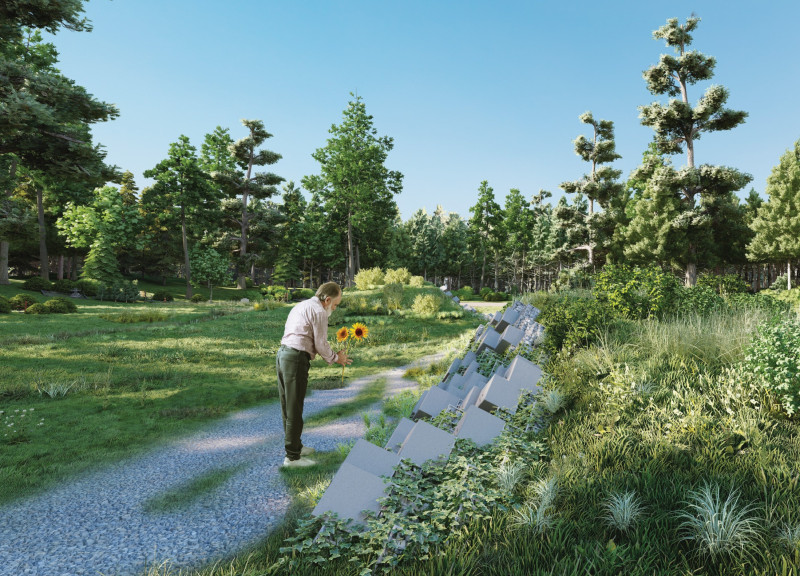5 key facts about this project
The project is located in a peaceful natural landscape in Latvia, reflecting a deep cultural understanding of death and the journey to another form of existence. The design emphasizes the idea of returning to nature, viewing death not just as an end but as the beginning of a new life. This concept drives the overall design, creating a space where people can thoughtfully engage with themes of memory and reflection.
Topographical Manipulation
Deliberate changes to the land shape the site. One side is excavated while the other is raised, allowing for a unique interaction between the living and the dead. A central paved path leads visitors through the space, inviting them to explore and contemplate the relationship between life and death.
Gabion Post Integrations
Gabion posts are key features within the design, providing locations for personal memorials. Each post supports niches that will hold personal items, creating a connection to memory. The layout of these posts is carefully planned, ensuring both structural stability and an engaging experience for visitors.
Vegetation and Natural Harmony
Native Latvian plants enrich the space, reinforcing the themes of life and death. Vegetation is thoughtfully placed according to the rise and fall of the land, blending with the architecture. Tall grasses line the site’s edges, creating visual divisions that promote quiet reflection and observation.
Interactive Commemoration
The gaps in the gabion posts allow visitors to place flowers and candles, enhancing the personal nature of the memorials. This design detail highlights the ongoing relationship between the living and the natural world. As plants grow within the gabions, they demonstrate the connection between memory and nature, showing how they can coexist.
As seasons change, the landscape reflects life's continuous cycle, where each element serves to honor memories and connect visitors to the natural environment.






















































